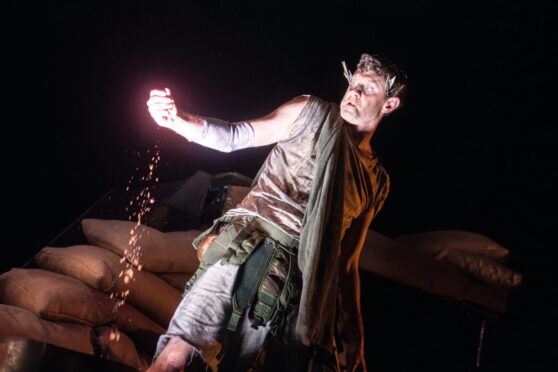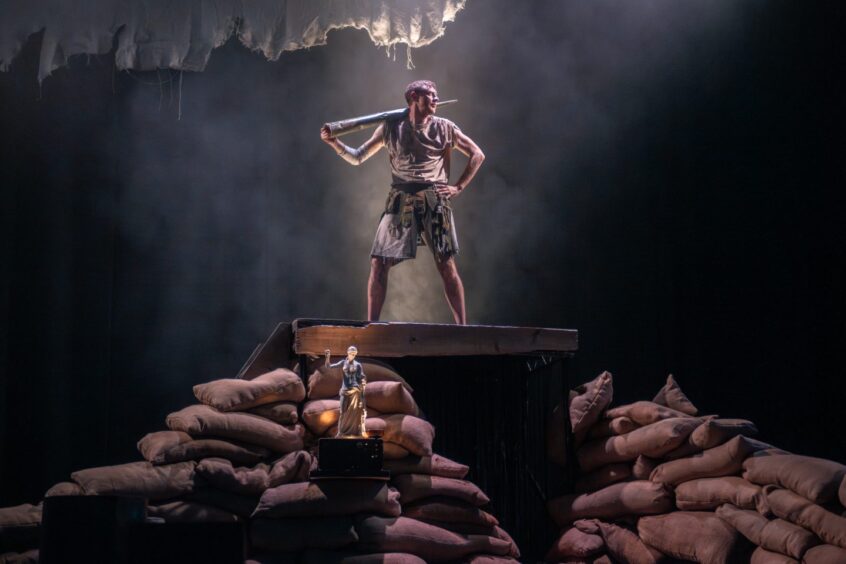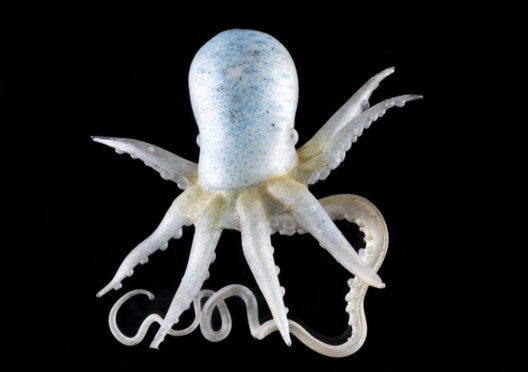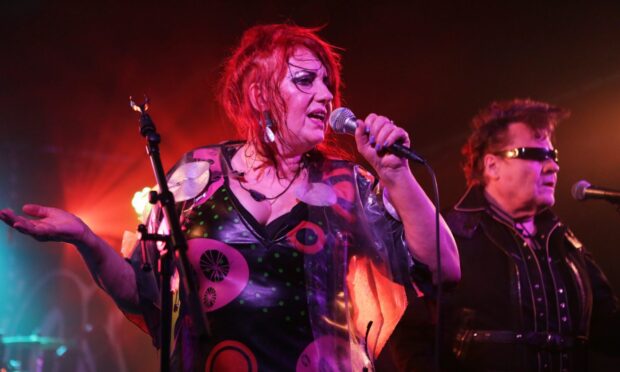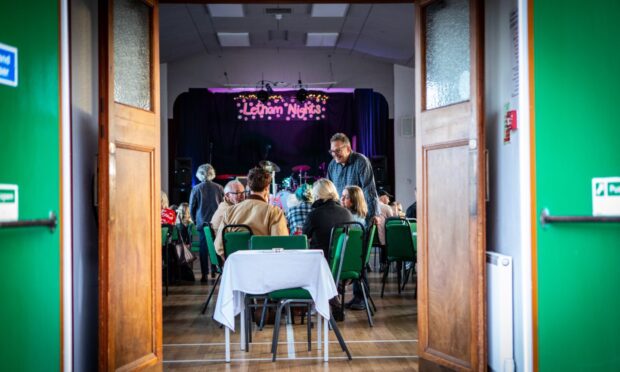In many ways, performance artist Al Seed’s new solo work with the Vanishing Point theatre company is difficult going.
It’s an entirely wordless piece which ideally involves some basic knowledge of the classical tale of Theseus and the Minotaur to get your head around – but it’s also a work which powerfully brings something of the raw physical effect of war and combat to life.
Seed is dressed in rags, face smeared in dirt which gives his skin a metallic quality under Alberto Santos Bellido’s atmospheric lighting.
Around him, designer Kai Fischer’s set is a semi-circle of sandbags which feels both like a First World War trench and a murky cave, depending on how it’s lit.
On top of this is a platform – the ‘plinth’ of the title – and in front is a small, pale white statue which Seed’s Theseus worships and abandons, as Theseus did his beloved Ariadne.
Against Guy Veale’s surging, claustrophobic electronic score, which gives the work much of its monumental power, Theseus travels into the cave to confront the beast.
The tale is told through movement alone, and physical theatremaker Seed is a master in this area.
He gets around the part of the show where talking should come by sitting around a simulated campfire and effecting a kind of speeded-up, gibbering mime, as though to cut to the chase.
The battle is visualised as raw physical power and confidence when he places a piece of fabric over his head and becomes an anonymous, unaccountable warrior, and sheer physical terror as he crawls into and out of the cave.
In the distance, machine guns fire, and Theseus cocks his sword-like weapon as though it were a rifle.
As he stretches and grows from an animalistic form into a bold statue on his plinth, Seed’s point about war is subtle but well-made – that noble warriors come from a place of savagery, violence and terror, both experienced and inflicted.
Run ended. Plinth is at the Byre Theatre, St Andrews on Thursday February 8 2024.
